Kittar

Kittar combines the cognitive benefits of learning through play to enhance the traditional process of learning the guitar. By having the child assemble the instrument themselves, this cultivates a personal relationship with the product which means the child is much more likely to look after it. The three upgrade packages gradually increase the complexity of the product’s electronics to match the user as they grow. It also provides an incentive to keep learning as the packages are aimed to be purchased a year apart, giving the user something to look forward to regarding learning their instrument.

The three stage progression of the Kittar
Stage 1
- Age: 7-8
- The first Kittar package includes the body, neck and the simplest wiring set.
Features
- 1 Pickup
- Master Volume
- Guitar Input
- Age: 7-8
- The first Kittar package includes the body, neck and the simplest wiring set.
Features
- 1 Pickup
- Master Volume
- Guitar Input
Stage 2
- Age: 8-9
- The second Kittar package includes the next, more complex wiring set including the template and the new components.
Features
- 2 Pickups
- Three-Way Switch
- Master Volume
- Guitar Input
- Age: 8-9
- The second Kittar package includes the next, more complex wiring set including the template and the new components.
Features
- 2 Pickups
- Three-Way Switch
- Master Volume
- Guitar Input
Stage 3
- Age: 9-10
- The last Kittar package completes the guitar’s journey, the package includes the final components and template.
Features
- 3 Pickups
- Master Volume
- Master Tone
- Guitar Input
- Three-Way Switch
- Age: 9-10
- The last Kittar package completes the guitar’s journey, the package includes the final components and template.
Features
- 3 Pickups
- Master Volume
- Master Tone
- Guitar Input
- Three-Way Switch
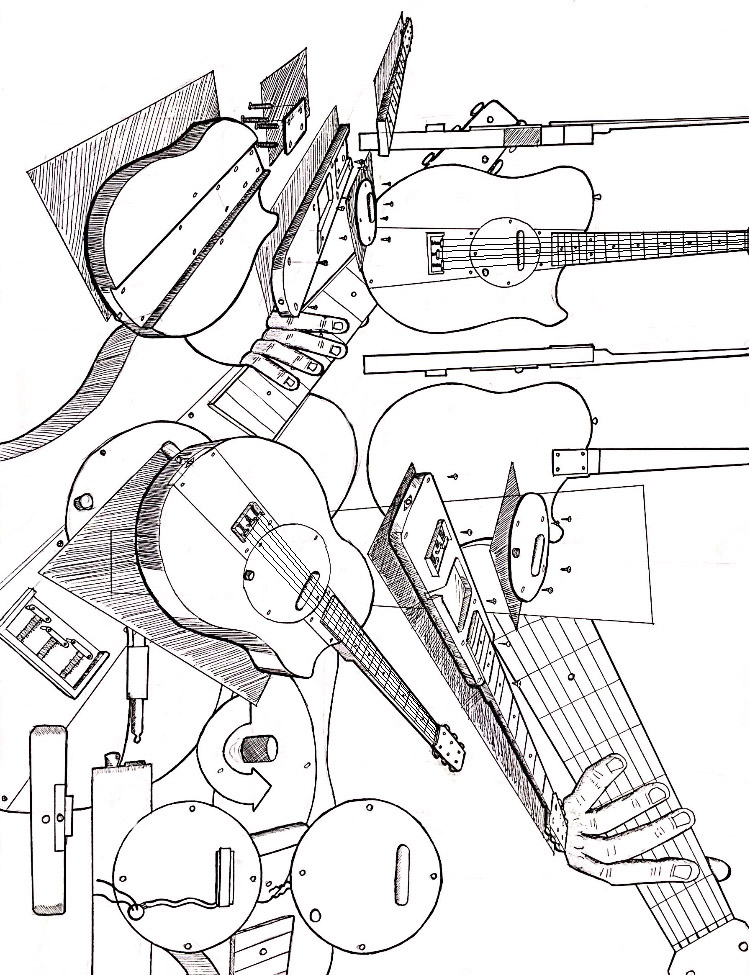


Intial Sketch Ideation
The initial sketch phase quickly allowed for the generation of ideas. This was useful to see how the lessons learnt in the research phase could be applied to a new approach to learning the guitar.
The idea selected for development featured a concept to replace the three separate size guitars (1/2, 3/4, 4/4) used when children learn, with one guitar that had three interchangable size necks. This concept would allow for a more personal relationship with the instrument as well as reducing the amount of guitars needed to be purchased during the process of learning.

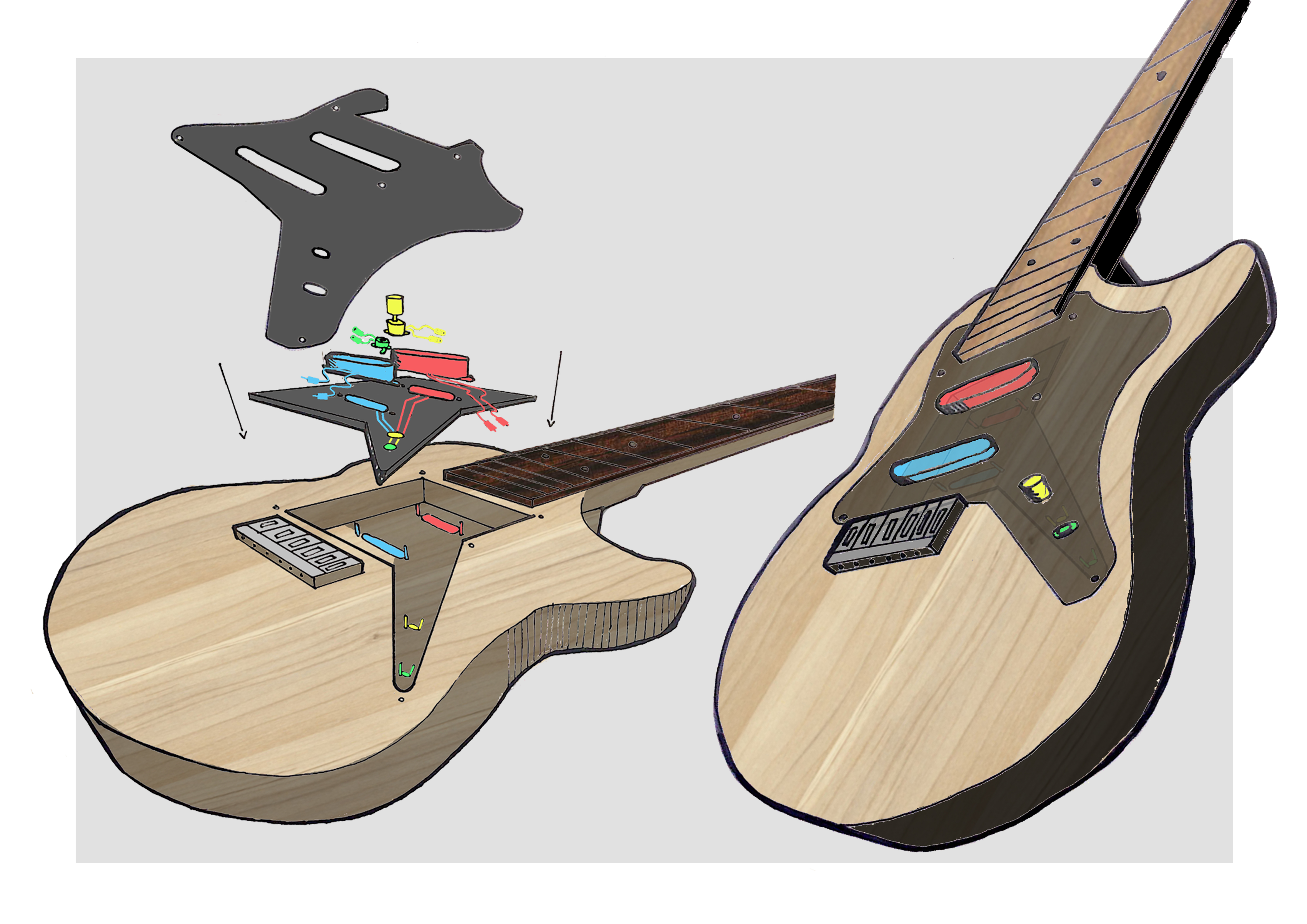
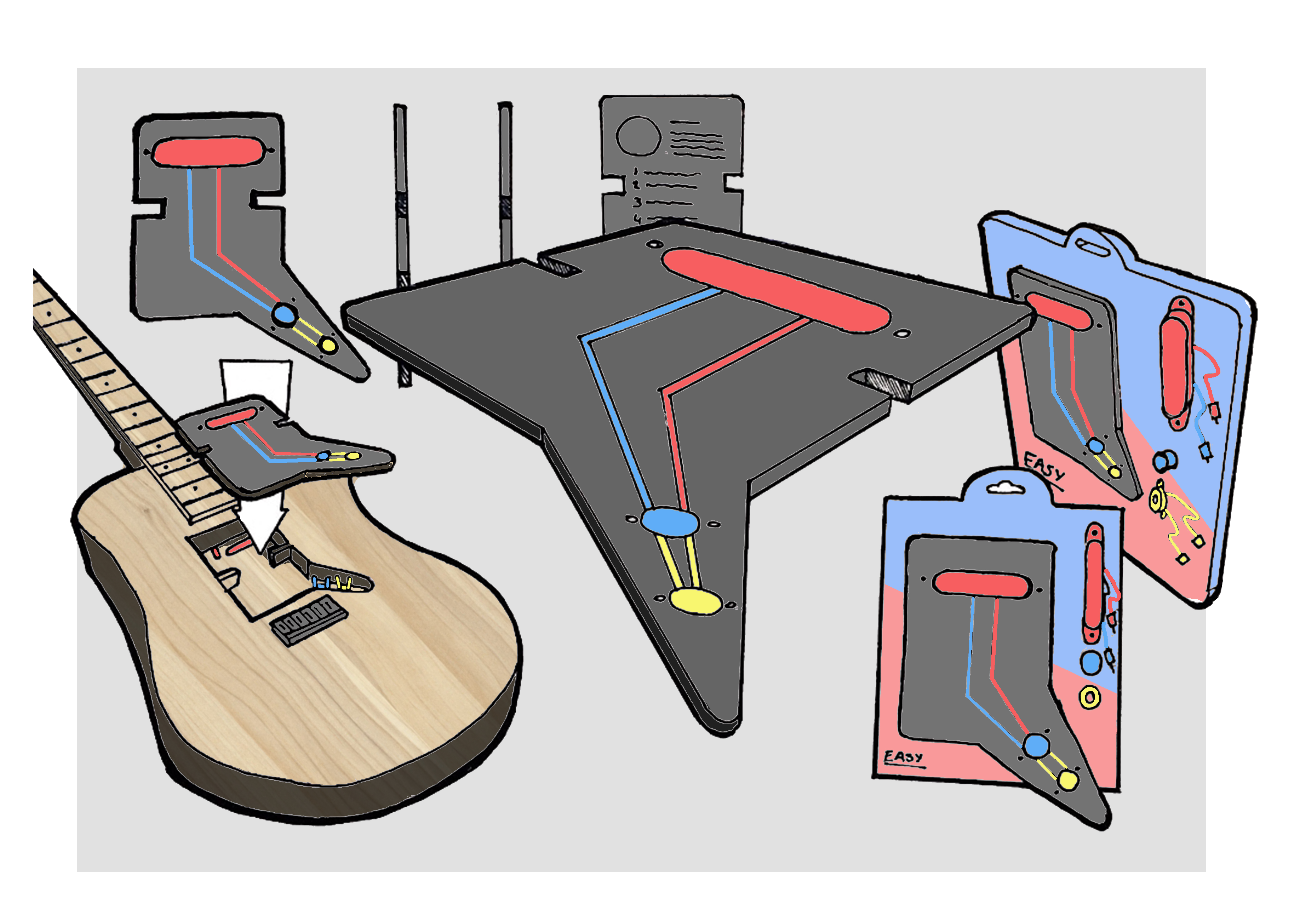
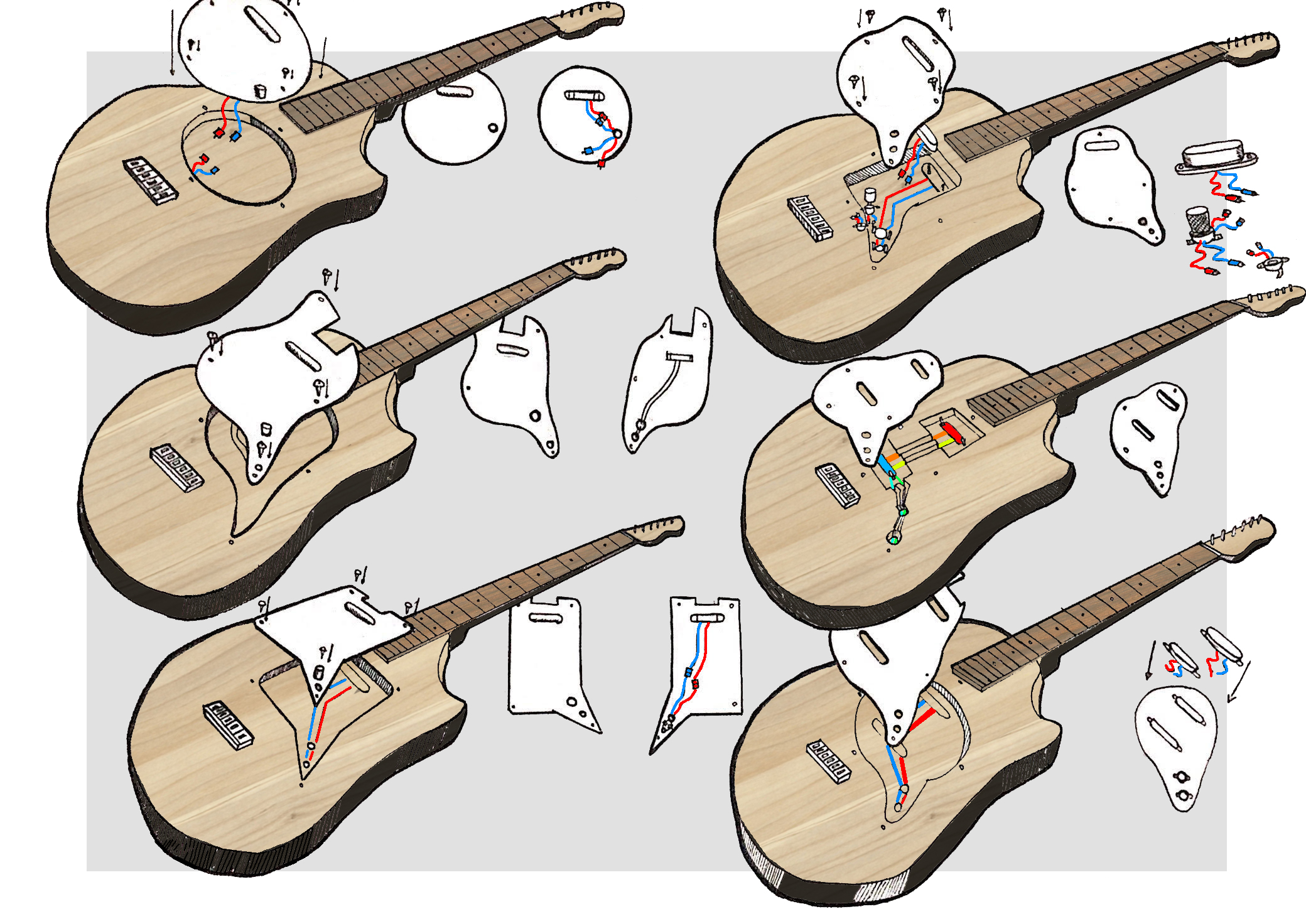



Above: Ideation sketches and form Development
It also became clear that the simpler the shapes of the components (such as the scratchplate) the more obvious it’s intended location was.

Kittar Stage 3
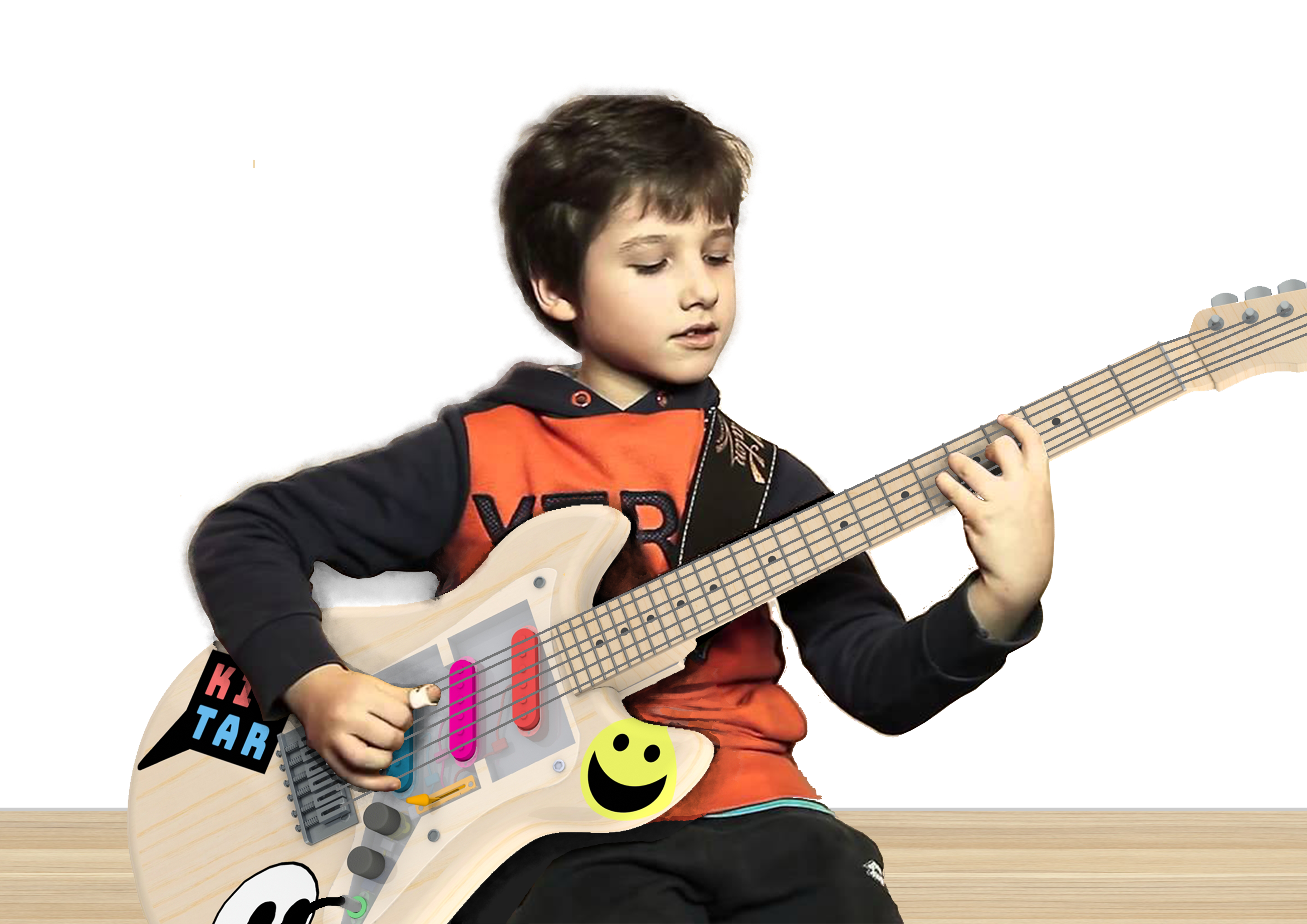
Linkedin: www.linkedin.com/in/edward-osborne-31b173209